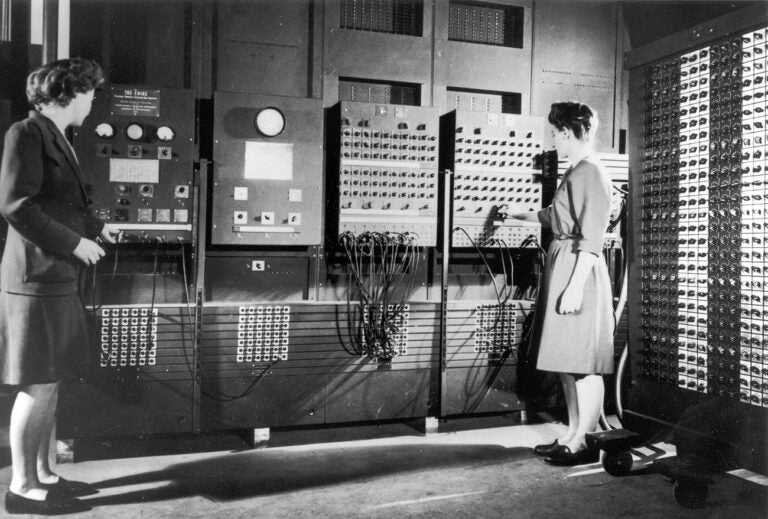ENIAC Programmers
In 1946 a team of six young women mathematicians made computer science history by programming the first general-purpose electronic digital computer.
Listen 0:58
Two women operating the ENIAC's main control panel while the machine was still located at the Moore School. Left: Betty Jennings (Mrs. Bartik) Right: Frances Bilas (Mrs. Spence) setting up the ENIAC. (United States Army/Public domain)
In 1946 a team of six young women mathematicians made computer science history by programming the first general-purpose electronic digital computer. It’s called ENIAC, Electronic Numerical Integrator and Computer.
This landmark accomplishment would prove invaluable in calculating artillery firing tables for the U.S. Army during World War II and in early research into the hydrogen bomb.
Yet when ENIAC was unveiled to the press and the public in Philadelphia after the war, the women were never introduced and remained largely invisible.
Their names: Kay McNulty, Betty Jennings, Betty Snyder, Marlyn Wescoff, Fran Bilas and Ruth Lichterman.
The fact that they figured out how to input programs to handle thousands of tedious, repetitive calculations without programming languages or tools, since none existed at the time, makes their achievement even more extraordinary.
In developing an understanding of ENIAC’s inner workings, they helped pave the way for a computer revolution.
WHYY is your source for fact-based, in-depth journalism and information. As a nonprofit organization, we rely on financial support from readers like you. Please give today.


